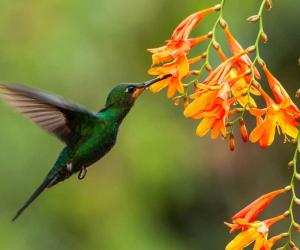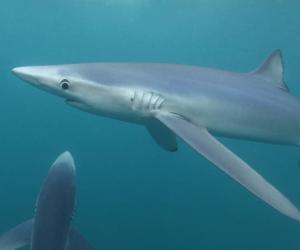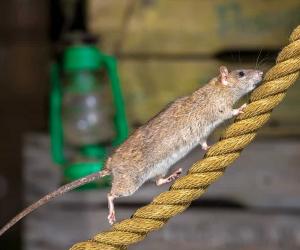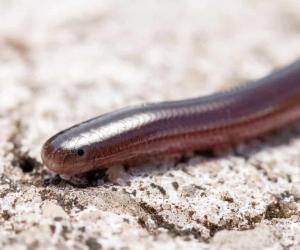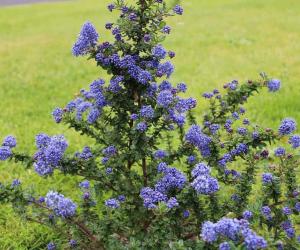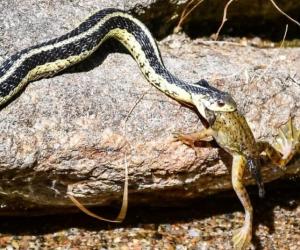Snake Found Pierced to Death After Eating a Hedgehog
Snakes are pretty much the apex predators at the top of the food chain, specifically when we’re talking about small mammals. Mice, rats, and furry creatures, beware when there is a snake around! Still, sometimes, the traditional hunter/prey power dynamic is turned on its head. In fact, a recent gallery of photos from Israel shows us something incredible; a snake in a bit of a… pokey situation. Check it out below.
See a Snake Trying to Eat a Hedgehog
While out walking their dog, some people a rather strange sight: a snake had died during an attempt at eating a hedgehog! They called an ecologist to come check out this scene, figuring it could be valuable for the scientific community to see. Once the expert got there, it was confirmed. It turns out that the snake had made a fatal mistake by trying to eat the hedgehog, and both animals died as a result!
The snake was a black whipsnake, a nonvenomous species that grows all over the world. Despite being nonvenomous themselves, they are rather famous for eating other venomous species, but mostly focus on small mammals and birds. The hedgehog was one of the three species found in Israel, all of which usually eat things like insects, birds, and even snakes (albeit very small ones).
Essentially, the hedgehog’s quills had pierced the snake through the mouth and throat. Through the trauma of the piercing quills and also the inability to breathe or fully swallow, the snake had eventually died. At the same time, the hedgehog’s quills had held it in place, ensuring that it wasn’t going to escape either. Its defenses had killed the attacker, but they didn’t save the hedgehog itself (there has to be a lesson in that!). The ecologist said that this was a rare case of natural selection since snakes usually know not to try and .
The Strange Mechanics of Snake Jaws
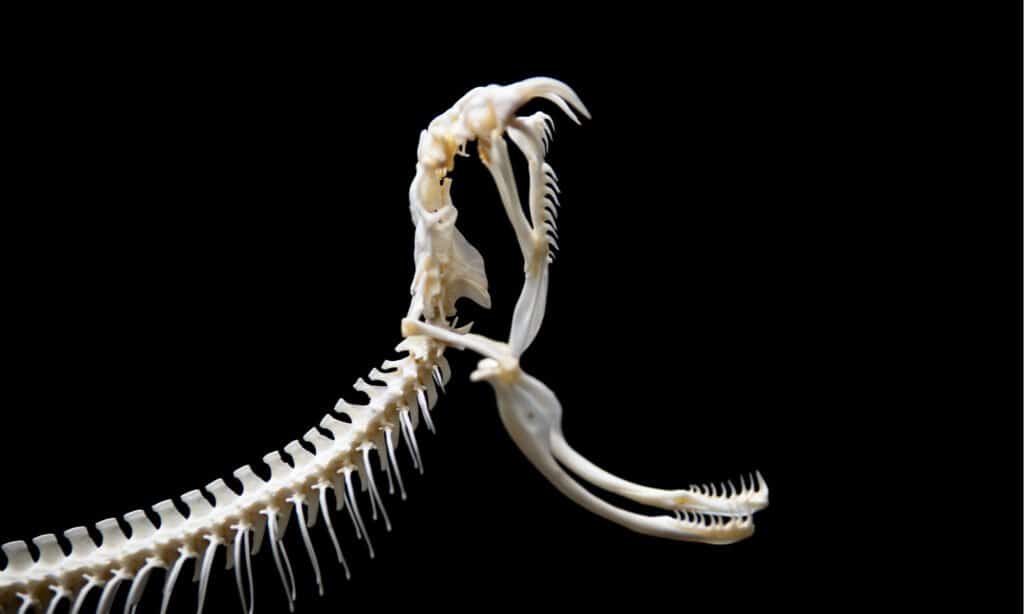
©David Herraez Calzada/Shutterstock.com
Snakes have a remarkable (and somewhat strange) ability to swallow very large prey. Their evolutionary adaptations give them some incredibly flexible jaws and ribs. Essentially, the two halves of their lower jaw are not connected at the front and only have a flexible ligament. When it’s time to swallow something, a snake can then open its mouth wider than its body and move its upper jaw over the prey in a side-to-side motion (something called a “pterygoid” walk). Also, the help to grip the prey and pull it into the throat.
However, swallowing large prey also poses some risks for snakes (clearly). Due to their metabolism, digestion can take a long time, and they are very vulnerable during this period. Additionally, things can get stuck, as seen above, and the resulting complications are just too much for the snake to deal with. In some cases, the snake will regurgitate the meal, but in others, it means the end!
Snake Species In Israel
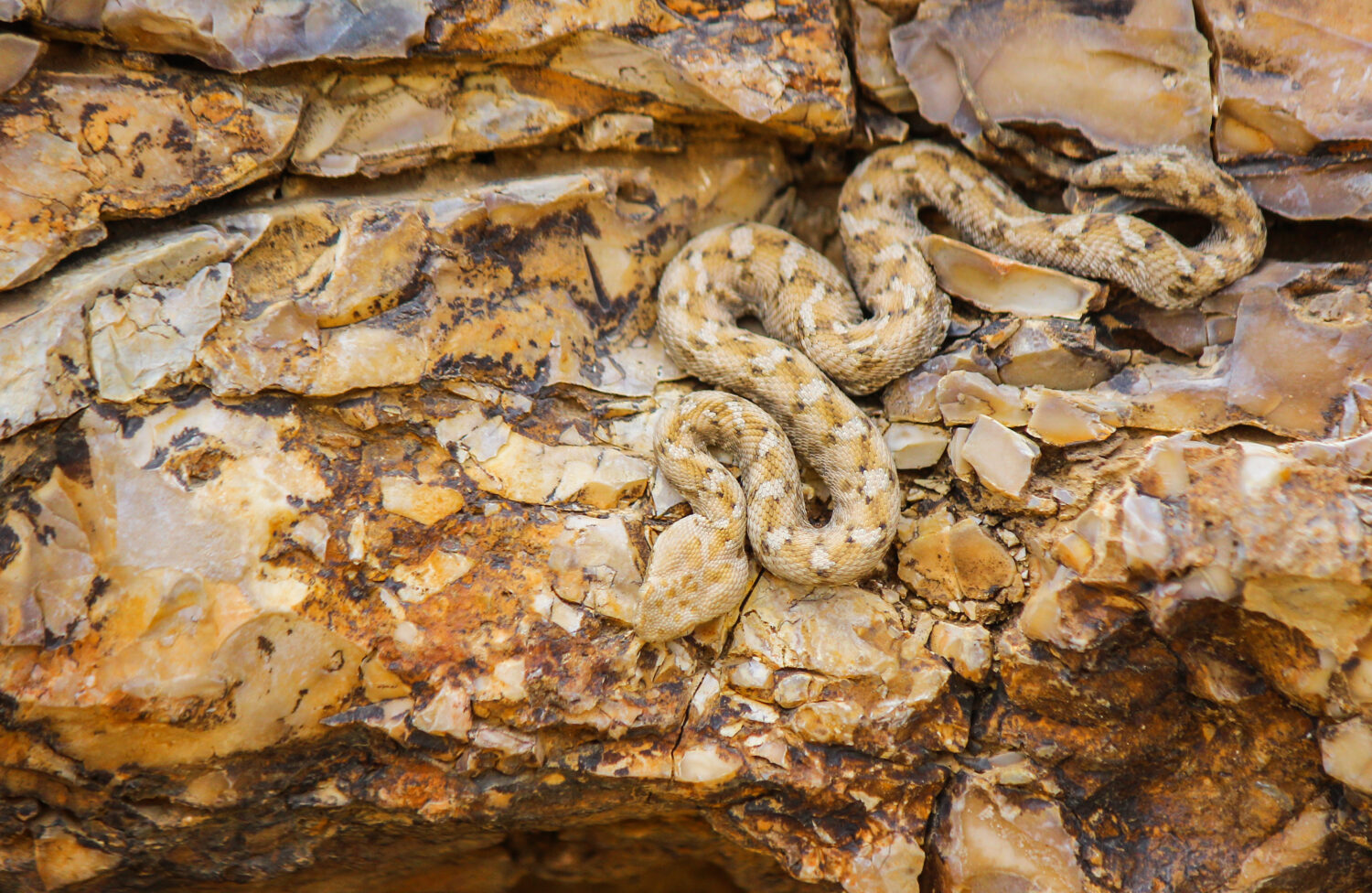
©AbuMazna/Shutterstock.com
The snake that tried to eat the hedgehog was a black whipsnake, which is known as the longest snake in the region where it’s found. They aren’t dangerous to humans and can actually be called “beneficial” due to their role in eating rodents and other . That being said, it isn’t the only snake in the region! There are around 42 snake species in Israel, of which only nine are venomous and truly dangerous to humans.
One of the most dangerous snakes in Israel is the Palestine viper. They can grow up to 1.5 meters long and are brownish-grey with irregular spots. They are among the most common venomous snakes found in the area. In fact, they are officially the national snake of Israel!
Another venomous snake that’s somewhat common (although not as common as the Palestine viper) is the painted . These snakes have a very noticeable pattern of redish, black, and white scales along their spines. They are quite small, usually reaching 75 cm at their largest.
These are some of the most venomous snakes in Israel, but there are also many harmless and beneficial snakes that play an important role in the ecosystem. Snakes are protected by law in Israel and should not be harmed or disturbed, and their role is important in maintaining balance across the ecosystems found in the region.
Discover the "Monster" Snake 5X Bigger than an Anaconda
Every day A-Z Animals sends out some of the most incredible facts in the world from our free newsletter. Want to discover the 10 most beautiful snakes in the world, a "snake island" where you're never more than 3 feet from danger, or a "monster" snake 5X larger than an anaconda? Then sign up right now and you'll start receiving our daily newsletter absolutely free.

